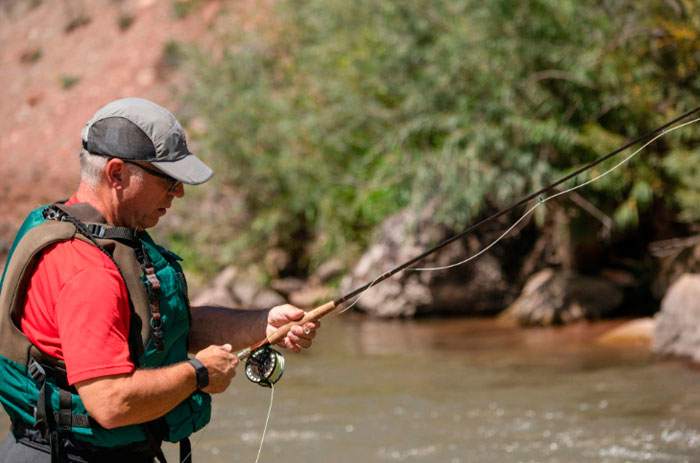Fly fishing at an advanced level is about more than just casting a line—every choice, from gear selection to interpreting subtle fish behavior, contributes to success. As anglers gain experience, the learning never truly stops; instead, it becomes more nuanced. Fine-tuning casting techniques, reading complex water patterns, and adapting to seasonal shifts all demand a deeper level of engagement. The guide below provided by Bryan Hackleman explores key areas where seasoned anglers can sharpen their craft to turn routine outings into more productive and rewarding experiences.

Refining Your Approach as an Angler
Experienced anglers know that progress often comes down to the finer details. While the basics of casting and fly selection may be second nature, consistent success requires constant refinement. Subtle changes in technique or timing can make a noticeable difference, especially in pressured or technical water. A small adjustment in fly height or rod tip angle might be all it takes to trigger a bite.
Many skilled fly fishers reach a plateau, but the most effective ones continue to analyze their performance and adapt. Adjusting wrist action during a cast or altering the retrieval rhythm can shift outcomes. Over time, building awareness of these nuances sharpens instincts, leading to better results without major overhauls. Even experimenting with leader length or fly spacing can lead to breakthroughs when conditions are tough.
Precision in Casting and Presentation
When it comes to catching selective trout, accuracy and subtlety often outweigh distance. A perfectly placed cast with a natural drift can trigger a take in water that’s been fished heavily all day. Even a small variation in how the fly lands or moves can determine whether a fish commits or spooks.
Casting under low-hanging branches or into tight seams demands muscle memory and control. Wind complicates this even more, requiring adjustments in loop shape and trajectory. Some anglers refine their double haul to cut through gusts, while others practice side-arm casts to stay low and avoid obstacles. These small tweaks add up to more consistent presentations. Learning to cast while kneeling or from awkward stances can also pay dividends in tight quarters.
Interpreting Water and Fish Behavior
Reading water becomes instinctual with enough time, but experienced anglers push beyond general rules. They notice how a slight depression behind a boulder can concentrate feeding fish or how different light angles influence where trout position themselves during midday. Watching how foam lines collect can also provide insight into feeding lanes.
A riffle might seem too shallow to hold fish, but a closer look reveals a deeper slot tucked beneath the chop. Fish often hold in these overlooked pockets, conserving energy while waiting for food. Observing how bubbles trace through current seams helps identify these feeding lanes, giving you clues on where to focus your efforts.
Behavioral cues also matter. A rise that leaves behind a subtle ring often signals a trout sipping emerges just below the surface. In contrast, an aggressive splash could mean the fish is chasing caddis or reacting to terrestrials. Even watching how long a fish holds in one spot can offer clues about its feeding rhythm.
Gear and Fly Selection
Choosing the right gear for the conditions isn’t just about comfort—it’s a major decision that can shape the entire outing. A fast-action rod paired with a weight-forward line might deliver tight loops in the wind, but in calm, technical water, a softer rod and longer leader can make presentations far more convincing.
The fly selection goes beyond matching the hatch. Some situations call for bold attractor patterns that grab attention, especially in murky water or during high flows. In contrast, crystal-clear streams with wary trout often reward anglers who tie on sparse, realistic imitations based on local insect life. Switching from a size 14 to a size 18 may seem minor, yet it can mean the difference between a miss and a catch.
Adapting Techniques to Seasonal and Weather Changes
Fly fishing success often hinges on the ability to adjust to the seasons. Early spring brings cold flows and sluggish fish that favor slow presentations and deep nymphing. As summer arrives, trout shift to feeding in faster water and become more responsive to dry flies during morning and evening hatches. Autumn, with its cooler air and lower water, often brings aggressive pre-spawn behavior in larger fish.
Sudden weather changes can throw off even the best-laid plans. A drop in barometric pressure before a storm might shut down surface activity, while overcast skies can trigger a mid-afternoon feeding window. Those who pay attention to these patterns learn to anticipate fish behavior and shift tactics without hesitation. Rain-swollen rivers may call for streamer tactics, while the high sun might push fish into shaded undercuts or deeper pools.
